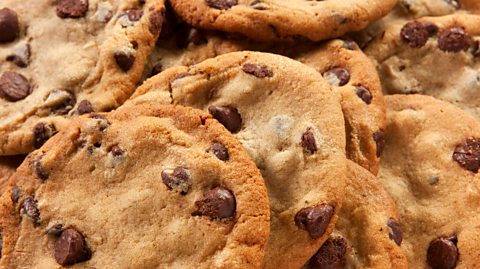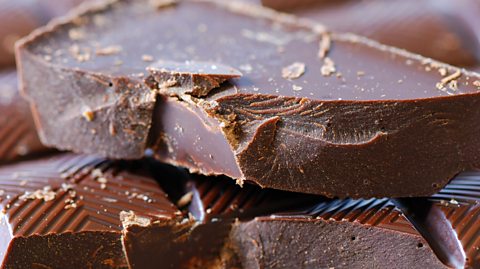Cake is good. Cake is lovely. And in the UK, we seem to be rather good at celebrating it.
Break down every slice of tastiness, though, and there can also be a sprinkling of history in with the flour and eggs. It could be linked to a specific incident, a story about its place of origin, tradition, or even a person connected with layers of sweetness.
From Halloween omens baked into a sweet loaf, to a Welsh recipe that is still celebrated in Argentina, the following is a whistle-stop, and definitely not exhaustive, tour of the United Kingdom and the cakes you may find at various locations.
WARNING: You may want cake by the end of this article.

We have the invention of afternoon tea to thank for the Victoria sponge, but there’s a sprinkling of science in there too.
In around 1840, Anna Russell, the seventh Duchess of Bedford found a dreary feeling set in at around 5pm after the effects of a large breakfast and light lunch had died off, with hours to go until the evening meal. To fight off the feeling, she ordered a tray of tea, bread and cakes to be delivered to her room at that time and friends were invited to join her. The idea caught on. Before long, Queen Victoria was organising afternoon tea too.
And that sprinkling of science? Baking powder. It was invented by food manufacturer Alfred Bird in 1843, six years after he also created instant custard powder. Intended as a yeast replacement, it helps cakes rise in the oven (the self-raising flour we buy today usually contains baking powder). It was used in a sponge cake with buttercream and raspberry filling that became an afternoon tea favourite of Queen Victoria herself.
Thought to be created in the early Victorian era as a fruitless, seed-free cake that children could eat without worry of choking, it became known as the Victoria sponge. A recipe calling it Victoria sponge was published by Mrs Beeton in 1861, but it did not include baking powder, or self-raising flour, unlike those we see today.

Moving across to Northern Ireland, where barmbrack is a traditional Halloween favourite that is also popular in the Republic of Ireland. It’s another type of fruit loaf, although the barmbrack recipe includes strong black tea.
Traditionally, different inedible items were baked into the loaf. Whichever object turned up in your slice was an indication of your future. A ring pointed to love, or even marriage and a coin meant good fortune. It wasn’t much fun to find a twig or a cloth in your slice, though. The first meant a dispute with someone and the second, just plain bad luck.
If you are making your own barmbrack, please don't bake any objects into your cake, as it can be a choking hazard.

This is a fruit cake recipe that includes oranges (preferably from Seville), sultanas and (if you’re a grown-up) whisky.
Different versions of the recipe have existed in Scotland for centuries, although it was first mass produced by a Dundee marmalade maker in the 19th Century. They used the left-over peel from making the marmalade. The cake is easily spotted from afar as it is decorated with almonds on top.
The official recipe even states how the almonds must be arranged on the top - whole ones for a round cake, with split ones allowed when it’s baked in other shapes.

Back to Northern Ireland for something unique to the list. A traybake can be whatever cake you want; fruit, chocolate, nutty, spicy - it’s the serving method that makes it a Northern Ireland tradition. As the name suggests, an entire baking tray is used to make a cake that is then sliced and shared.
Paula McIntyre, a Northern Irish chef and broadcaster, told Bitesize: “They’re part of our social life. They come out at times of despair and celebration. If there’s a coffee morning to raise funds, there’ll be a traybake. It could be slices of fruit cake, that are buttered, or a tea loaf.
“Go to anyone’s house in Northern Ireland and the kettle will be on and you’ll have something sweet with it. The worst thing you could be accused of in Northern Ireland is being a 'hungry house'.” In this context, a hungry house is where someone has nothing in the larder to offer guests.
A popular traybake recipe in Northern Ireland is Fifteens (pictured), so-called because the recipe calls for 15 each of its main ingredients: marshmallows, glace cherries and biscuits. Fifteens don’t need an oven though - they ‘bake’ in the fridge.

The literal translation for this tasty Welsh loaf is speckled bread.
It’s a fruit loaf and its origins are a little mysterious. One theory relates to the end of the working week, in that the bara brith was the last loaf put in the oven as the heat was receding. To make this loaf more appealing, fruit was added. It’s traditional to soak the fruit in tea before baking.
The loaf made the headlines in 2006, when a supermarket chain withdrew bara brith from its shelves in parts of Wales, but it was quickly reinstated.
One place you will find bara brith (or a version of it) served regularly is Patagonia in Argentina. The valley around the Chubut river was first colonised by Welsh settlers in 1865 and its connections with Wales have remained. Welsh fare is still sold today in the area's cafes and tea rooms. In the Welsh-Argentinian community, bara brith is also known as torta negra, the Spanish for 'black cake'.

Bonfire night in Yorkshire and Lancashire wouldn’t be the same without parkin, which dates back hundreds of years. A solid and sturdy gingerbread cake, parkin is made with oatmeal, an ingredient easily available due to the abundance of oats in the area. Ginger was also affordable as was another ingredient, black treacle, imported from the West Indies through the local ports.
It is said that parkin can be traced back to at least 1728, when a woman called Anne Whittaker appeared in court after stealing oatmeal in order to bake a batch of it.
The earlier recipes did not include expensive butter or eggs, using dripping instead. As ingredients became cheaper, flour and sugar were also added to parkin, giving it a lighter texture than previously. As well as the Bonfire night tradition, parkin is also associated with festivals that mark the beginning of winter.

Selkirk bannock
Bannocks are a type of flatbread. Variations on the recipe can be found all over Scotland - and parts of England.
One of the more famous comes from Selkirk, a town in the Scottish borders. The Selkirk bannock is made with sultanas. It can be sliced and spread with a bit of butter, or even toasted.
In traditional bakeries, the Selkirk bannock is made with a dough similar to a sourdough starter and the ingredients are added over a period of 20 hours. The dough then ferments twice, which allows it to rise, before it is baked.
Queen Victoria was once said to have enjoyed a slice of Selkirk bannock with a cup of tea while visiting the author Sir Walter Scott, although debate remains whether this really happened. Scott did refer to it in his historical novel The Bride of Lammermoor, published in 1819 but set more than a century earlier.


If you want a cake from Wales, these couldn’t be more aptly named.
An interesting combination, Welsh cakes use a recipe that is similar to scone mix, but is cooked in the same way we would pancakes - on a hot pan or griddle - but look a little like a biscuit when they’re finished.
Welsh cakes don’t have biscuit’s crunchy texture though, they’re soft, almost squidgy, with the addition of dried fruit. The Museum of Wales traces them to Glamorgan in the 19th Century, where they would have been popular in farms, cottages and part of a miner’s packed lunch.
Welsh cakes were originally made on a bakestone, a type of griddle that was popular in Wales at the time. With the stone having different names in different regions of Wales, the Welsh cakes served from them had names relating to those regional differences. Depending on which part of Wales you were in, they were called cacen gri, tishen lechen and pice ar y mân, among others, names still used today.
This article was updated in July 2023
Myth-busting food origin stories
Chocolate chip cookies, crisps and Caesar salad all have legendary histories, but are they true?

A brief history of chocolate
It's delicious, but where does it come from?

